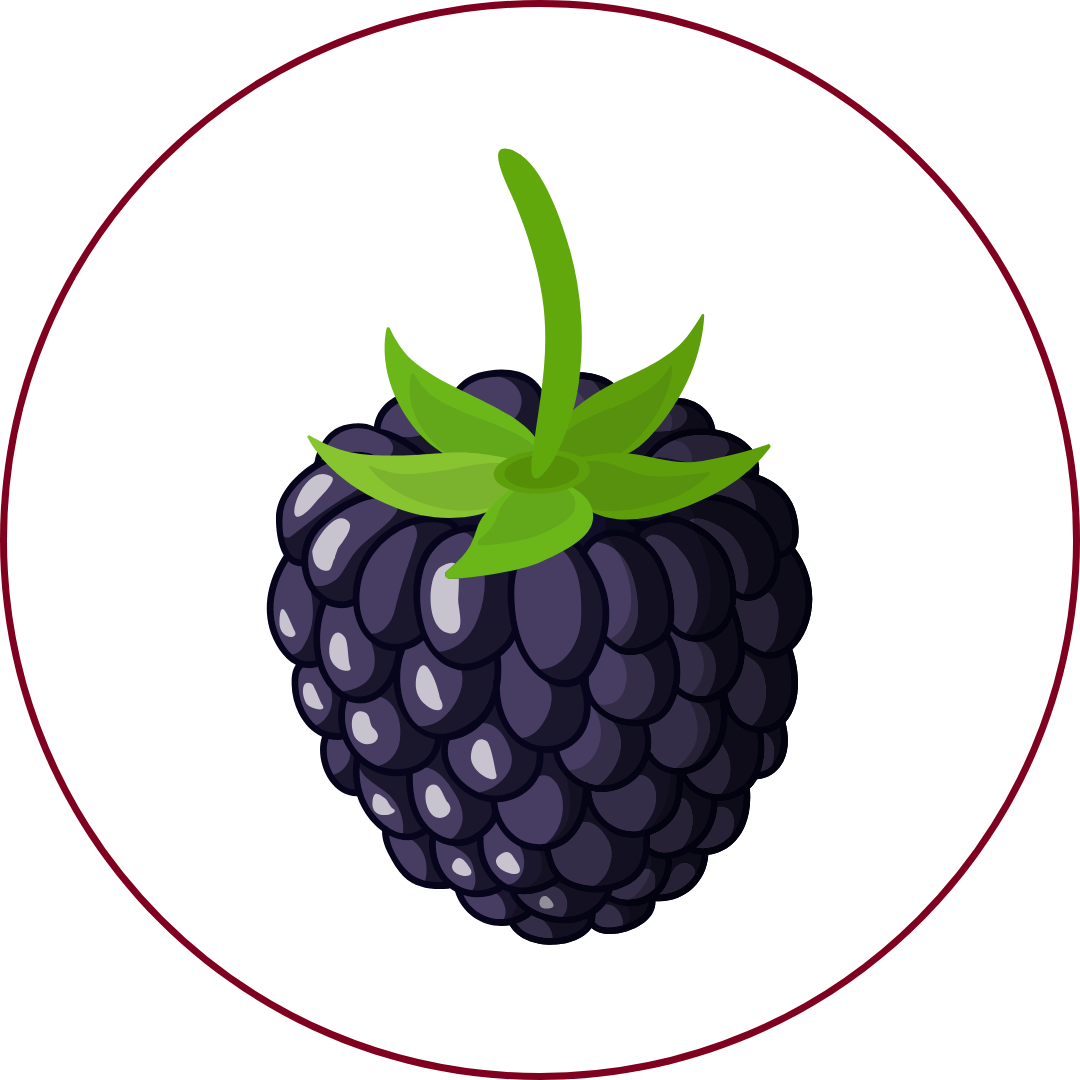Grape Variety
Sagrantino
"sah-grahn-TEE-noh"
Wine Styles
 Sparkling
Sparkling Light White
Light White Full White
Full White Aromatic
Aromatic Rosé
Rosé Light Red
Light Red Medium Red
Medium Red Full Red
Full Red Dessert
DessertAbout Sagrantino
Origin
Umbria, Italy
History
Sagrantino is an ancient red grape variety native to the Montefalco region of Umbria in central Italy. Its origins are somewhat unclear, with the first written record in Umbria in the late 16th century as a communion wine. The name 'Sagrantino' is believed to derive from 'sagra' (feast) or 'sacrestia' (communion wine), indicating its historical use in religious ceremonies. The grape was traditionally used to produce sweet passito wines, but in recent decades, dry (secco) versions have gained prominence, especially after the Montefalco Sagrantino wine was granted DOCG status in 1992.
Appearance
Small, thick-skinned berries with a deep blue-black hue, growing in compact clusters.
Growing Traits
Sagrantino is a vigorous vine that thrives in the clay and limestone soils of Umbria. It is well-suited to hot and dry conditions, producing grapes with high tannin content and deep color. The grape's thick skins contribute to its resistance against diseases and pests. Sagrantino is typically harvested in late October, allowing for full phenolic ripeness, which is essential to balance its robust tannins.
Wine Characteristics
Body
5/5
Sweetness
1/5
Tannin
5/5
Acidity
4/5
Alcohol
4/5
Full-bodied with a robust structure, characterized by high tannins and deep color. Typically vinified dry, though traditional sweet passito styles also exist. Exceptionally high tannin levels, contributing to its bold and astringent profile. Medium to high acidity, providing balance to its rich tannic structure. Moderate to high alcohol content, generally ranging from 13.5% to 15%.
Taste Profile

Blackberry

Plum

Licorice

Black tea

Black pepper
Sagrantino wines are known for their intense and complex flavor profile. Dominant notes include dark fruits such as blackberry and plum, complemented by hints of licorice, black tea, and black pepper. The high tannin content provides a firm structure, while the medium to high acidity adds freshness. With aging, Sagrantino develops additional layers of complexity, including earthy and spicy nuances, making it a wine with excellent aging potential.
Food Pairing
Sagrantino's bold tannic structure and full body make it an excellent match for rich, hearty dishes. It pairs well with grilled meats, game, and aged cheeses. Traditional Umbrian dishes such as wild boar ragù, roasted lamb, and pecorino cheese complement the wine's intensity. The wine's high tannins also allow it to stand up to spicy dishes and those with high fat content, making it versatile in pairing with diverse cuisines.
Growing Regions

Italy
Umbria (Montefalco)

United States
CaliforniaTexas

Australia
South Australia
Notable Wines & Producers
Montefalco Sagrantino DOCG
Arnaldo Caprai
Paolo Bea
Marco Caprai
Montefalco Rosso DOC
Scacciadiavoli
Antonelli San Marco
Sagrantino FAQ
Common questions about this grape variety
What is the origin of Sagrantino?
+
Umbria, Italy
Is Sagrantino wine full bodied?
+
Sagrantino has a body level of 5 out of 5. Which means that Sagrantino is Full bodied.
Is Sagrantino wine dry or sweet?
+
Sagrantino has a dryness level of 1 out of 5. Which means that Sagrantino is Dry.
Where is Sagrantino wine from?
+
Umbria, Italy
Where is Sagrantino grown?
+
Sagrantino is grown in Italy (Umbria (Montefalco))United States (California, Texas)Australia (South Australia).
What is Sagrantino like?
+
Sagrantino wines are known for their intense and complex flavor profile. Dominant notes include dark fruits such as blackberry and plum, complemented by hints of licorice, black tea, and black pepper. The high tannin content provides a firm structure, while the medium to high acidity adds freshness. With aging, Sagrantino develops additional layers of complexity, including earthy and spicy nuances, making it a wine with excellent aging potential.
What does Sagrantino pair with?
+
Sagrantino's bold tannic structure and full body make it an excellent match for rich, hearty dishes. It pairs well with grilled meats, game, and aged cheeses. Traditional Umbrian dishes such as wild boar ragù, roasted lamb, and pecorino cheese complement the wine's intensity. The wine's high tannins also allow it to stand up to spicy dishes and those with high fat content, making it versatile in pairing with diverse cuisines.
What does Sagrantino taste like?
+
Sagrantino wines are known for their intense and complex flavor profile. Dominant notes include dark fruits such as blackberry and plum, complemented by hints of licorice, black tea, and black pepper. The high tannin content provides a firm structure, while the medium to high acidity adds freshness. With aging, Sagrantino develops additional layers of complexity, including earthy and spicy nuances, making it a wine with excellent aging potential.
Take Sagrantino Knowledge with You
Access detailed grape profiles, tasting notes, and pairing suggestions on your iPhone.
Download on theApp Store